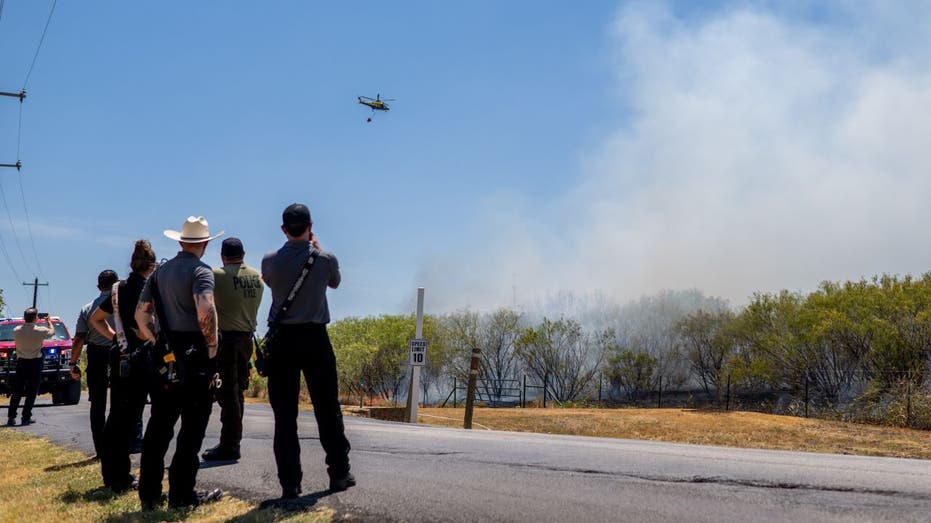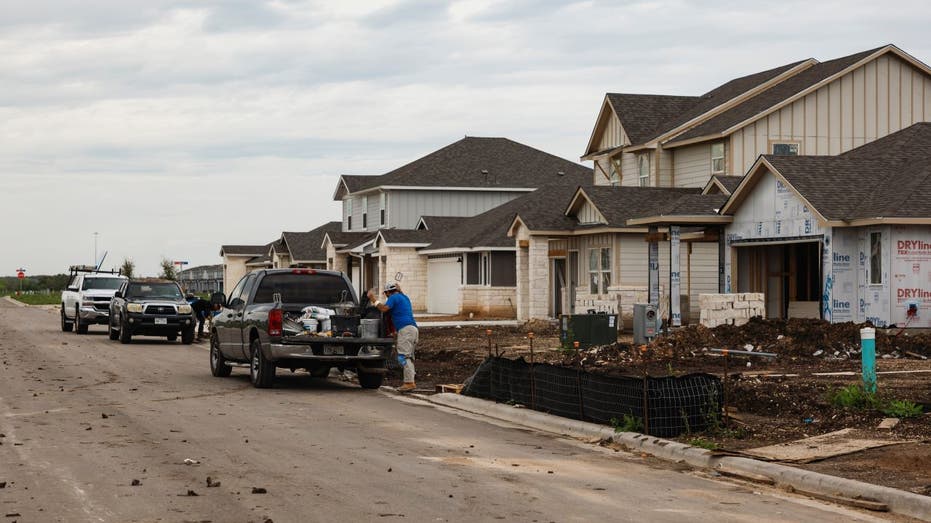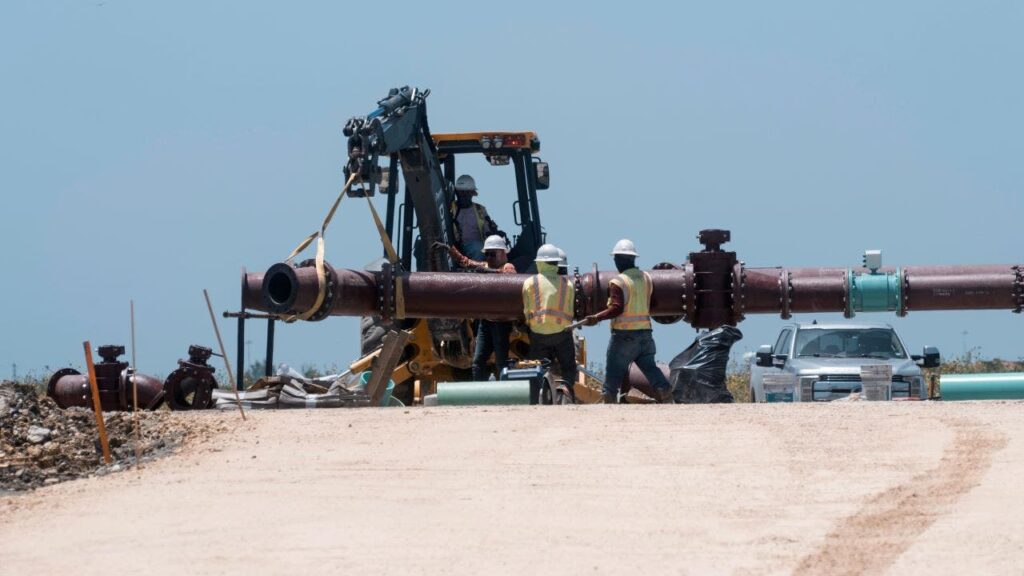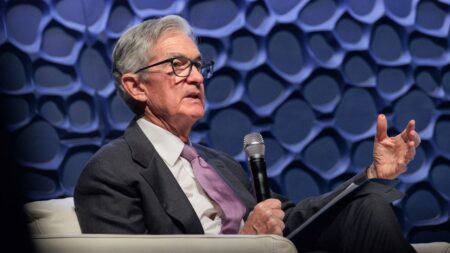The city of Kyle, Texas, is among the fastest-growing municipalities in the U.S. but as its population has surged, its water supply has struggled to keep pace despite efforts.
Kyle is located between Austin and San Antonio and has seen its population boom in recent decades from 5,314 in 2000 to 62,500 in 2023. Coupled with drought and high temperatures, that rapid growth has placed a premium on water, which Kyle has had to purchase from nearby San Marcos to help meet the rising demand.
“It’s a combination of multiple factors,” Kyle Mayor Travis Mitchell told FOX Business in an interview. “It’s climate change, which is producing a lot of heat and extra droughts. The droughts are longer and more frequent, so that’s one. The second is just the growth in general – more homes, more people, more yards, more irrigation systems, more drawing down on the aquifer.”
Mitchell said a third factor contributing to the city’s water shortage is the delay of a new pipeline that will bring water from the Carrizo-Wilcox aquifer to Kyle. While it’s expected to come online early next year, the city’s growth has itself contributed to the delays.
CALIFORNIA REPORTS THE FIRST INCREASE IN GROUNDWATER SUPPLIES IN 4 YEARS
Graham Moore, executive director of Alliance Water, told FOX Business that there have been several factors causing delays to the project.
“Some of them are equipment-specific delays as we came out of the pandemic and had kind of a tight market on some equipment, particularly the water treatment plant,” Moore said. He added that because Kyle has been increasingly heavily developed, it took an “inordinate amount of time” to secure the easements and property rights needed to route the pipeline to the city.
Moore said that Alliance Water’s intent is to expand the project to deliver water to its sponsors from the Carrizo-Wilcox aquifer for a 50-year timeframe. Though the aquifer does recharge when storms bring rain to the region, he noted that it’s slower to react to changes in the pumping and recharge of the aquifer because of its vast size, which stands in contrast to the nearby Edwards aquifer that reacts more quickly to droughts or rainfall.
TEXAS FARMING CRISIS LOOMS AS US, MEXICO SPAR OVER LONG-STANDING WATER TREATY
The Alliance Water project’s sponsors are communities like Kyle, which Moore noted has fostered a more collaborative approach to managing water resources in the area.
“Because all of these entities came together to develop a joint project, it did a couple of things,” he explained. “It improved the economies of scale and so it made it more affordable for all of the entities. But probably as importantly, it allowed us to share water between some of our sponsors that had a little bit excess for a time until a new supply source came online and those contracts into place where, for instance, San Marcos can make water available for Kyle to use until the Carrizo water comes online.”

Robert Mace, an executive director of the Meadows Center for Water and the Environment and a professor at Texas State University, told FOX Business that while the Carrizo-Wilcox aquifer can play a long-term role in providing water to the region, those who are drawing on it could see some issues with its output in 10 to 20 years if growth in the area continues.
“The aquifer won’t go dry,” Mace explained. “What I’m saying is that wells will just start interfering with each other and you may be fine with your well, but once all your neighbors have wells, they’re also pulling water out of the aquifer and that may cause you to not pull as much as you were able to pull out before.”
RURAL TEXAS TOWNS REPORT CYBERATTACKS THAT CAUSED ONE WATER SYSTEM TO OVERFLOW
“Longer term, I kind of look at the Carrizo-Wilcox as a bridge in supply to seawater desalination. Seawater desalination is expensive, but it’s not horribly expensive,” Mace said. He also noted that Corpus Christi is developing seawater desalination plants in the area and that there are discussions about a similar project in the Houston area.
Mace added “there very well could be one reaching from the Gulf of Mexico into central Texas at some point in the future,” and that while it isn’t currently in Texas’ water plan, “With the increase in temperatures, increasing droughts, that could quickly change.”
“In terms of long-term and even near-term solutions to our water issues – it’s not a silver bullet, it’s a silver buckshot,” Mace said. He noted that some communities in the area are looking at wastewater treatment to return that water to the system for other purposes including drinking water. Mace also pointed to other conservation measures like reducing water usage on landscaping, as well as harvesting rainwater and air conditioner condensation for offsetting outdoor use or to flush toilets.

Mitchell expressed a similar sentiment regarding the city’s approach to seeking a variety of solutions to Kyle’s water shortage as the Carrizo pipeline comes closer to being online.
“It’s very important for the city to not just think, ‘oh, this project is going to solve all our problems long-term.’ It is not,” the mayor said. “It’s very important for all of the various municipalities and jurisdictions that are putting their straws into the Carrizo to understand this is only a part of the process. We need to, more than anything, change the way we think about water. It is not an unlimited resource. It is something that is precious and we need to use it as if it doesn’t just regenerate.”
Mitchell said the City of Kyle recently changed its landscaping ordinance to put a greater emphasis on artificial turf and natural plantings. New developments are required to plant more drought tolerant landscaping, and the city is developing a program to incentivize the reconfiguration of lawns away from needing as much irrigation.
The city is also looking at installing a new plant at its water treatment and wastewater facility to return treated water to a potable level so it can return to use, as well as desalination and groundwater storage.
“We’re trying very hard to increase the supply while also reshaping the demand and putting programs in effect to that end,” Mitchell said. “That new water supply from the Carrizo, while very important, is not the only way for us to increase our water supply.”
Read the full article here











